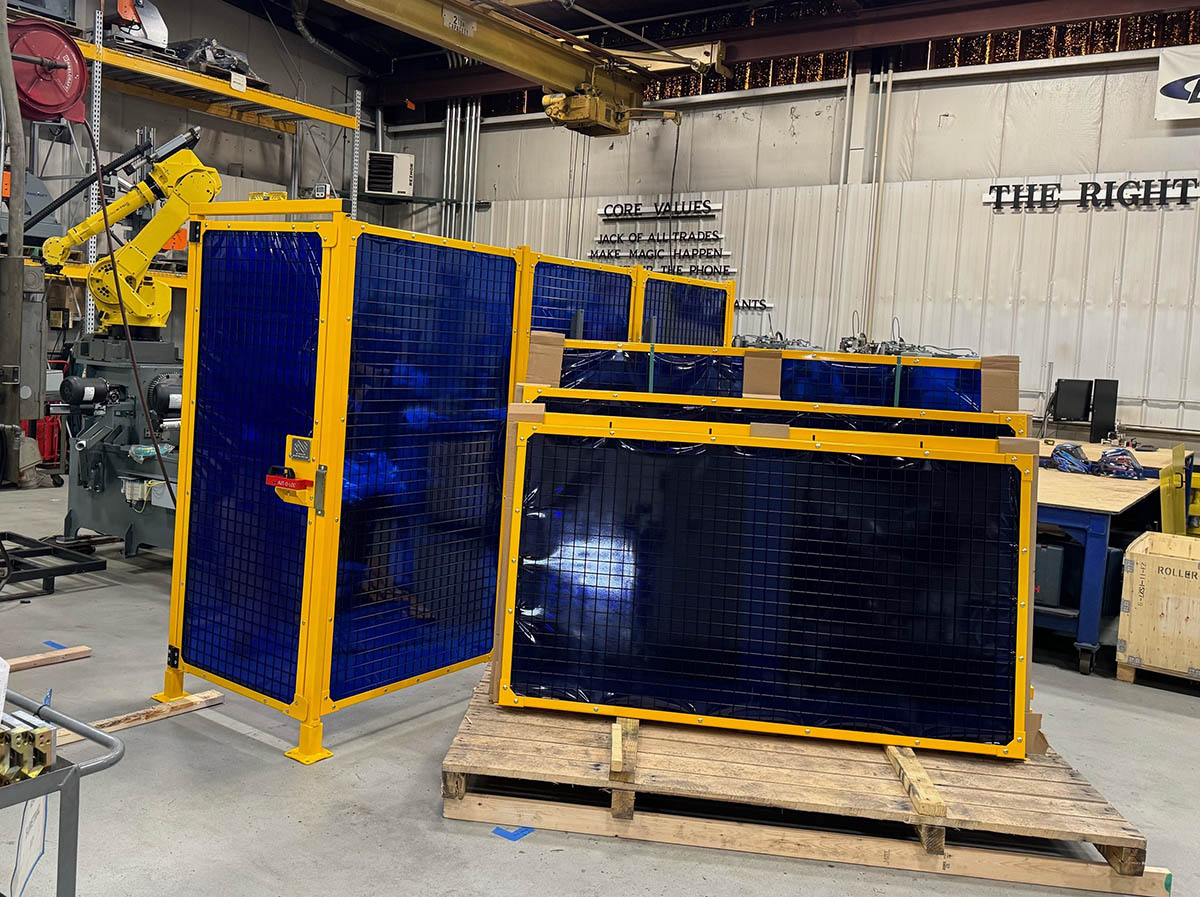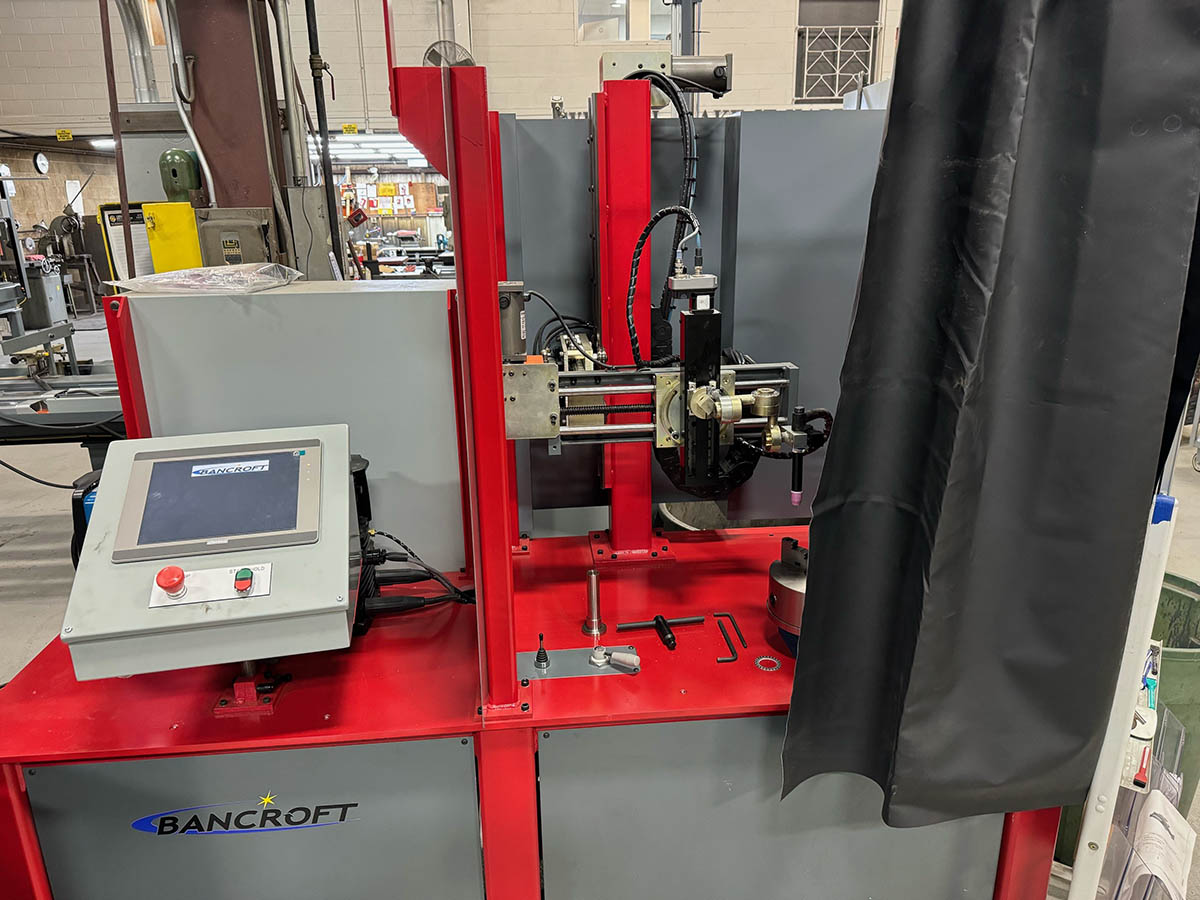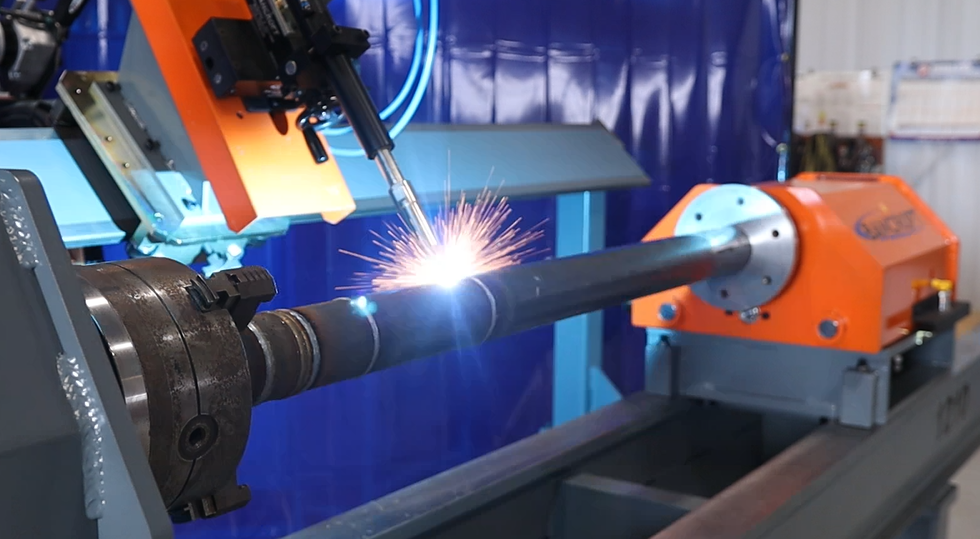Image: Welding Personal Protective Equipment (PPE)
Maintaining top safety standards in welding is not simply an expectation; it is imperative. Due to the risks inherent to welding processes, stringent safety measures must be implemented to protect operators and ensure a seamless experience free from accidents or injuries.
Technology advances like Bancroft Engineering’s approach of automating welding tasks—either fully or semi-automatically—may drastically enhance both safety and efficiency. In this post, we explore solutions which could further strengthen your safety protocols.
Understanding Traditional Welding Methods
Traditional welding techniques pose many risks, from exposure to toxic fumes, UV burns, electric shock, and high temperature parts, tools, and fixtures. With so much at stake for operators as well as production quality alike, safety must always remain a top priority to avoid potential dangers and maximize production output.
Hello Automation
Automated welding equipment from Bancroft Engineering was designed with safety as its top priority. These systems reduce manual handling of welding tools, thus decreasing risks like burns and electric shock. Furthermore, automation provides more precise control of welding process for improved accuracy—further decreasing accidents while creating a safer working environment. Explore our equipment offerings.
Key Safety Features of Automated Welding Equipment:
- Enclosed Welding Areas: Automated welding systems feature enclosed welding areas designed to contain sparks, spatter and fumes; significantly lowering human exposure to potentially hazardous byproducts.
- Fume Extraction Systems: Automated welding equipment equipped with integrated fume extraction systems can remove welding fumes from an operator’s breathing zone and thus create better air quality, decreasing health risks and creating cleaner air in your manufacturing facility for greater comfort.
- Precision Control: Automated systems offer precise controls that not only enhance weld quality but also help mitigate over-welding risks that could present unsafe working environments.
- Reduce Operator Fatigue: Automated welding systems reduce operator fatigue by requiring less manual intervention from operators, thus lessening physical strain and fatigue as well as human error-based accidents.

Image: Arc Flash Protection

Image: Arc Flash Curtian
Implementing a Comprehensive Safety Program
Automated welding equipment offers many safety benefits, but to fully capitalize on its potential, a comprehensive safety program must also be in place. Here are a few common safety measures we recommend:
- Regular Training: Operators require ongoing instruction on the most up-to-date safety practices and proper use of automated welding systems.
- Maintenance and Inspection: Regular examination of welding equipment should help to ensure it remains in optimal working condition and free from defects that pose potential safety threats. We offer a suite of support services for all our equipment such as preventative maintenance, control upgrades, on-site server, and replacement parts.
- Personal Protective Equipment (PPE): Ensure operators are wearing all necessary PPE for operating your welding systems. This is of utmost importance for their own safety! This often includes welding helmets, gloves, googles or glasses and protective clothing.
- Ventilation and Air Quality Monitoring: Proper ventilation in welding areas must be ensured, along with air quality monitoring to protect against toxic fume accumulation.
Top Safety Standards for Your Welding Operation
Safety should always be of top concern in welding operations, and by adopting Bancroft Engineering’s automated welding equipment into your operations you can reduce risks associated with traditional methods while increasing efficiency and weld quality simultaneously. Technology shouldn’t replace a comprehensive safety program; rather, it should complement it so as to achieve both operational excellence and maximum levels of welding safety simultaneously.



